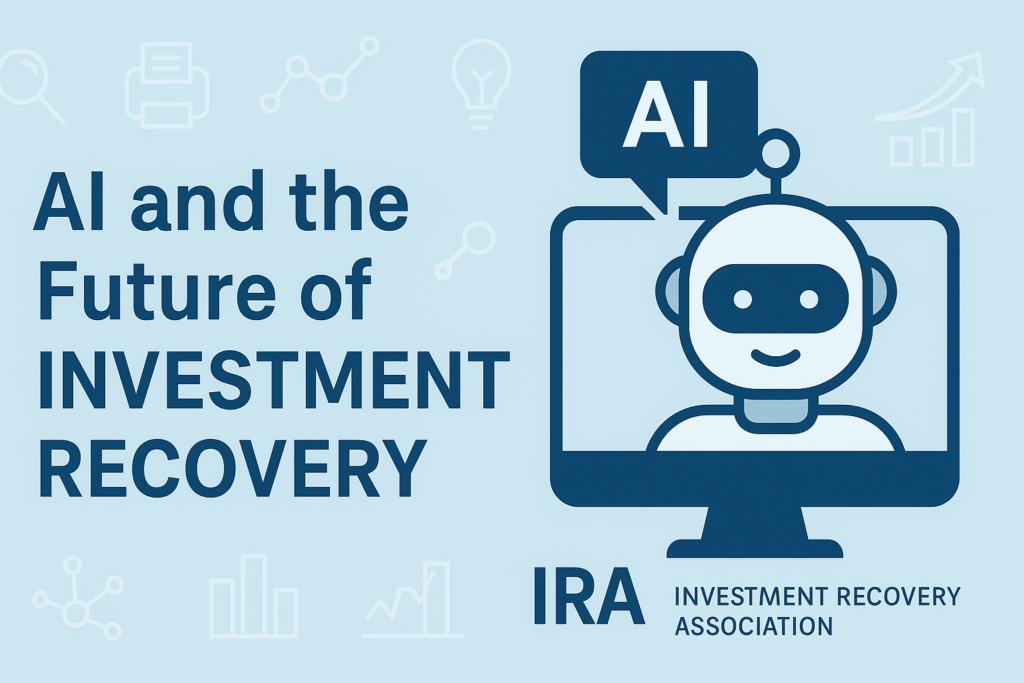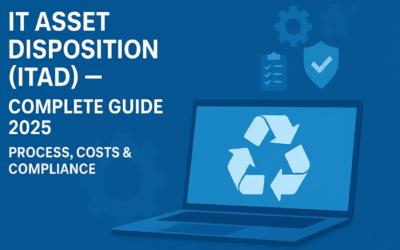
What’s New in AI: Lessons from Chuck Gallagher’s 2025 IRA Conference Keynote
From Internet Revolution to the Age of AI
At the 2025 Investment Recovery Association (IRA) Conference, keynote speaker Chuck Gallagher reminded attendees that every major shift in technology—from the birth of the internet to the smartphone—initially seemed like a novelty before becoming a necessity.
He drew parallels between the creation of the internet in 1983, the launch of Netscape in 1994, and the current rise of AI tools like ChatGPT. “In 1994, we didn’t know what a browser really meant,” Gallagher said. “We just knew it changed everything.”
Today, artificial intelligence is doing the same. Only this time, the change is happening faster and deeper.
Everyday AI: We’re Already Using It
Gallagher illustrated how AI is already woven into daily life—from smartwatches detecting heart irregularities to self-driving cars and smart home devices responding to “Alexa, turn on the lights.”
Whether we realize it or not, AI quietly records, predicts, and adapts to our habits. “Everything we do is already connected,” Gallagher said. “We are living in a time where we are so indelibly tied to technology that it’s impossible to separate the two.”
For investment recovery professionals, that connectedness translates into opportunity. Every sensor, transaction, and machine log produces data—data that can be used to optimize asset value, track utilization, and predict end-of-life cycles.
ChatGPT: The Fastest Adoption in Tech History
When OpenAI launched ChatGPT on November 30, 2022, they expected modest traction. Instead, they hit one million users in five days and 100 million within 20 days—making it the fastest-growing technology platform in history.
Today, over 80% of Fortune 500 companies use AI tools across operations. And it’s no longer about novelty; it’s about competitive necessity. Gallagher noted that most business software now comes with built-in AI features—Microsoft Copilot, Google’s AI search summaries, and countless automation assistants that make complex work simpler.
What AI Teaches Us About Data Value
Gallagher made the connection that resonates most with IRA members: AI is ultimately about data—and so is investment recovery.
He told the story of a grocery chain that used AI to analyze shopping behavior. By moving shampoo closer to the feminine-care aisle, the store boosted sales by 21.7%—all from simple data analysis.
The takeaway? Whether it’s shampoo or surplus assets, data reveals value patterns. Understanding when and how to act—when to sell, when to refurbish, when to redeploy—depends on data-driven insight.
From Fleet Trucks to Surplus Equipment: Using AI to Make Better Decisions
To make this real for the IRA audience, Gallagher demonstrated a live ChatGPT use case:
“Let’s say you manage a utility fleet and want to know when to sell your pickup trucks for maximum resale value instead of waiting until they’re worn out,” he prompted.
ChatGPT produced a complete total cost of ownership model, comparing replacement intervals, depreciation, and resale scenarios—essentially creating a decision calculator in seconds.
For investment recovery managers, similar AI prompts can project optimal disposal timing, evaluate market resale trends, or even generate auction pricing recommendations. The lesson: AI isn’t replacing judgment—it’s amplifying it.
Guardrails for Responsible AI Use
Gallagher cautioned that organizations must establish AI guardrails to protect proprietary data and ensure consistency.
Key recommendations:
-
Use enterprise or paid versions of AI tools to ensure data privacy and accuracy.
-
Create internal AI policies so employees know what tools are approved and what data can be shared.
-
Leverage custom instructions or templates for consistency in tone and compliance.
-
Start small—pilot repeatable tasks like report generation, market summaries, or asset valuation models.
As Gallagher put it, “The worst thing that can happen is having everyone experiment with AI differently without structure.”
The Big Picture: AI as a Tool, Not a Threat
Gallagher’s most powerful message came near the end:
“AI is just a tool. The question isn’t whether it will change your business—it already is. The question is: how will you use it?”
He encouraged investment recovery professionals to treat AI the way accountants once treated calculators—not as a shortcut, but as an amplifier of human intelligence.
Just as spreadsheets replaced manual ledgers, AI will reshape how organizations discover value in their assets, automate documentation, and engage buyers.
Closing Thought: Embracing What’s Next
Gallagher concluded with a reflection on creativity and innovation, referencing how AI even helped recreate John Lennon’s voice for the Beatles’ final song, “Now and Then.” Technology, he said, will continue to blend the past and future in unexpected ways.
For investment recovery leaders, the same holds true: embrace innovation, safeguard your data, and use AI to uncover the hidden value in every asset.


